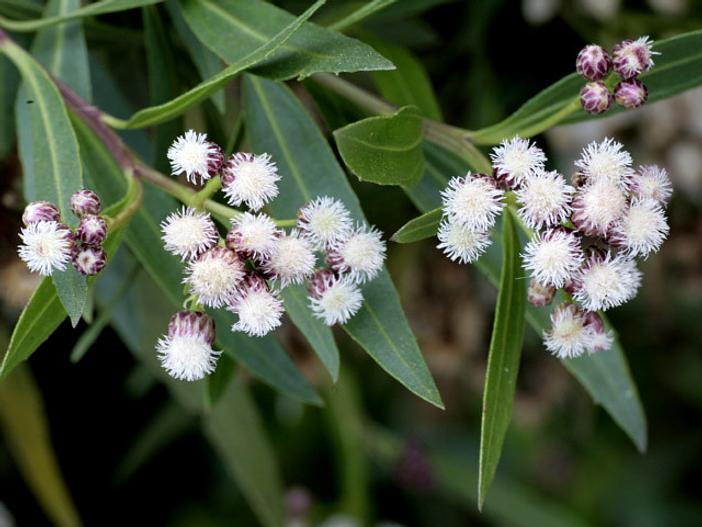Mule Fat
(Baccharis salicifolia)
Mule Fat (Baccharis salicifolia)
/
/

NatureShutterbug
CC BY 2.0


























Estimated Native Range
Summary
The plant is valued for its wildlife benefits, particularly as a nectar source for butterflies. It is used in restoration projects, for erosion control, and in naturalistic garden settings. Mule Fat thrives in full sun to part shade and prefers medium water, making it suitable for water-wise gardens when established. It is adaptable to various soil types, provided they have good drainage. While it is not known for significant disease problems, it can become invasive outside its native range, so gardeners should check local regulations before planting.CC BY-SA 4.0
Plant Description
- Plant Type: Shrubs
- Height: 6-12 feet
- Width: 3-9 feet
- Growth Rate: Rapid
- Flower Color: N/A
- Flowering Season: Spring, Summer, Fall
- Leaf Retention: Evergreen
Growth Requirements
- Sun: Full Sun, Part Shade
- Water: Medium
- Drainage: Fast
Common Uses
Bee Garden, Bird Garden, Butterfly Garden, Drought Tolerant, Erosion Control, Low Maintenance, Street Planting
Natural Habitat
native to riparian zones, wetlands, and other moist areas in the southwestern United States, northern Mexico, and parts of Central and South America
Other Names
Common Names: seepwillow , water-wally
Scientific Names: Baccharis salicifolia , Baccharis caerulescens , Baccharis linifolia , Baccharis salicifolia var. salicifolia , Baccharis pallida , Baccharis viminea var. viminea , Baccharis marginalis var. caerulescens , Baccharis salicifolia subsp. multibraceata , Baccharis corymbosa , Baccharis marginalis var. longipes
GBIF Accepted Name: Baccharis salicifolia (Ruiz & Pav.) Pers.